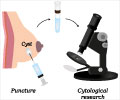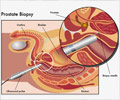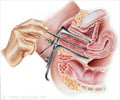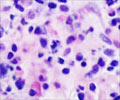Researchers hope that a newly developed breast biopsy technique may help reduce procedure times, patient discomfort and morbidity.
The novel technique is being tested at Roberts Research Institute, the University of Western Ontario and London Health Sciences Centre, London, ON, Canada.It uses a mechanical arm to guide the needle for the biopsy. It also has a braking system to allow for accurate placement of the needle, and to avoid needle motion.
Breast biopsy procedures, using both methods, were performed on phantoms during the study.
"Our results showed that biopsy success rates were greater when using our new guidance system. We also showed that experienced and inexperienced radiologists performed a biopsy significantly faster when using our needle guidance system," said Dr. Aaron Fenster, lead author of the study.
According to the researchers, t he success rate using the needle guidance system was 95.9 per cent, compared to a success rate of 91.3 per cent using the freehand technique.
While experienced radiologists took approximately 31 seconds to complete a procedure using the freehand technique, the needle guidance system reduced the procedure time to approximately 10 seconds.
Advertisement
"The system we designed is a prototype and is required to be redesigned for routine clinical use. Tests with human subjects are planned for the fall of 2009," he said.
Advertisement
Source-ANI
TAN













